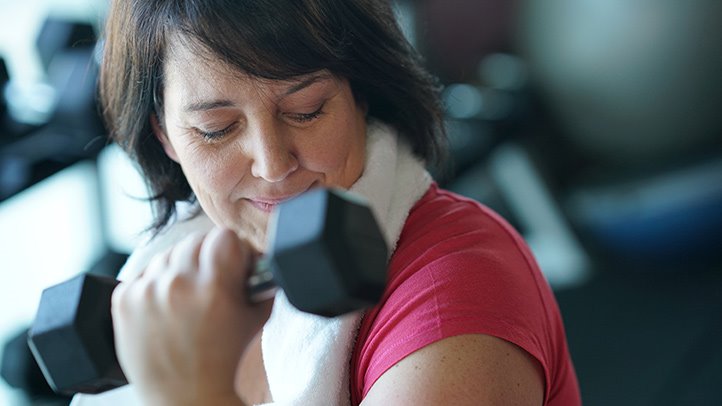Seniors in good health can often stay as healthy and active as they were when they were at a younger age. There are some modifications that many fitness trainers and professional healthcare experts will typically recommend for more mature individuals. Being fit can boost your metabolism, keep your weight down, aid in ambulation or other movements and will often elevate your mood naturally from the powerful release of endorphins known to decrease pain and encourage feelings of well-being. Many individuals desire to live healthier lifestyles, but they often fail in their endeavors because their goals were not realistic enough. People often lose motivation because the fitness or other healthy work plan is too difficult.
How Seniors Can Make Realistic Fitness Goals
To lessen the chances of giving up on your future fitness strategies, take some time to learn how seniors can make realistic fitness goals to better the chances of sticking with your healthier routine. Everyone should have personalized health and fitness plans that should include regular exercise sessions several times a week and good nutrition to fuel your body’s increased nutritional needs without gaining weight. First, a senior citizen should clear any diet and exercise programs with their family doctor. There are some practical tips for creating realistic fitness goals all seniors should consider using.
Can Seniors with Ambulation or Other Health Problems Still Exercise Safely?
In general, the answer to this important question is yes. Those that must use a wheelchair or other ambulation aid can still participate in regular exercise programs if their fitness plan has the necessary modifications to ensure safety. Those that need walking assistance or have difficulty sitting for long periods of time should check-out newer and innovative mobile devices such as the Zinger Chair. Falls are still a leading cause of severe health issues common in the senior population, like broken bones, head trauma, and other injuries. To avoid this, the person should be thoroughly assessed by a healthcare professional and/or a fitness trainer to determine the best-modified movements and routines for the client’s safety.
Steps for Making and Mastering Fitness Goals That are Individualized and Realistic
There are ways to master fitness goal-making that seniors will find helpful. Instead of jumping into your new healthy lifestyle full force, it is typically better to ease into the new habits and practices slowly. Try to keep the goal components a bit flexible for best results. As individuals reach each goal, they are more motivated to continue on to the next.
Commonsense Ideas for Improving Nutritional Habits Later in Life
The state of your health is connected closely with your food and beverage choices. Many seniors report that they have experienced weight gain, feel chronically fatigued, or have more problems in general with their health than they did when they were just a few years or decades younger. Your body’s unique metabolism often changes due to hormonal fluctuations common as people become older. The good news is that by making a few positive changes in your diet and eating habits, seniors can look, feel, and often move better. Try switching out your sugary and/or caffeine-laden beverage preferences, like sweetened coffee or sodas, with water, diet drinks, and other healthier beverage choices. To encourage weight loss and other common symptoms due to poor eating habits, add in-season fresh veggies and fruits into your daily eating routines. Stay away from overly processed, artificially flavored, highly salted, or seasoned and higher caloric foods. Substitute healthier picks instead.
Why Strength Training is Important for Those Over 55
Many seniors wonder if they can, or should, add strength training exercises into their general fitness programs. Unless contraindicated by your doctor, strength training is important for both younger individuals and those over the age of 55. Those that have bone, joint or muscle pain and/or activity limitations, can still get the benefits of strength training during easier-for-seniors exercise choices like walking and swimming. Simply speeding up, adding weights and/or lengthening the walk routine can deliver powerful results. Alternately, swimming is easier on the joints, bones, and muscles, and more health and fitness professionals highly recommend this form of exercise for older clients. Seniors can lead healthier lifestyles with a few simple changes.

